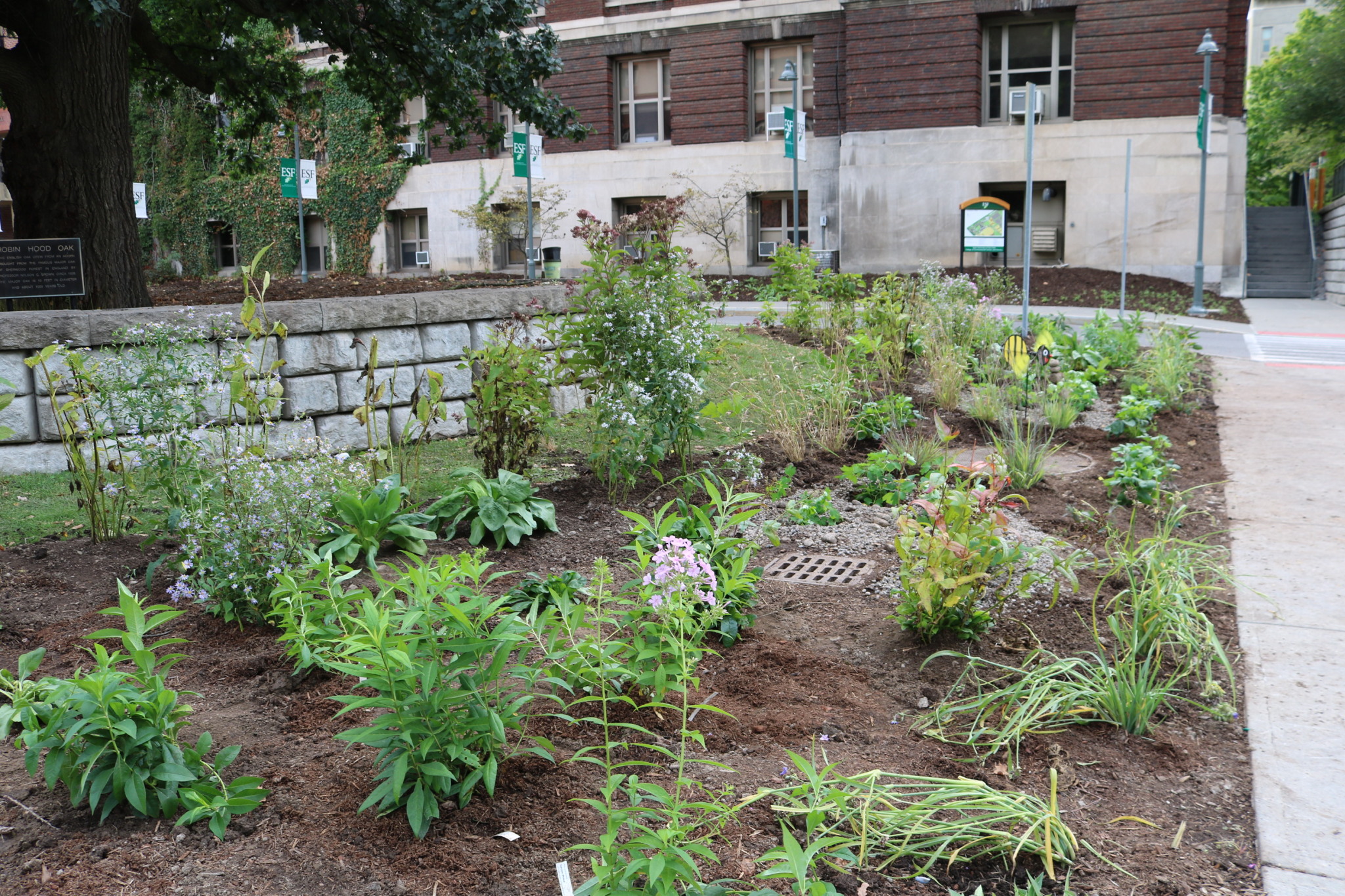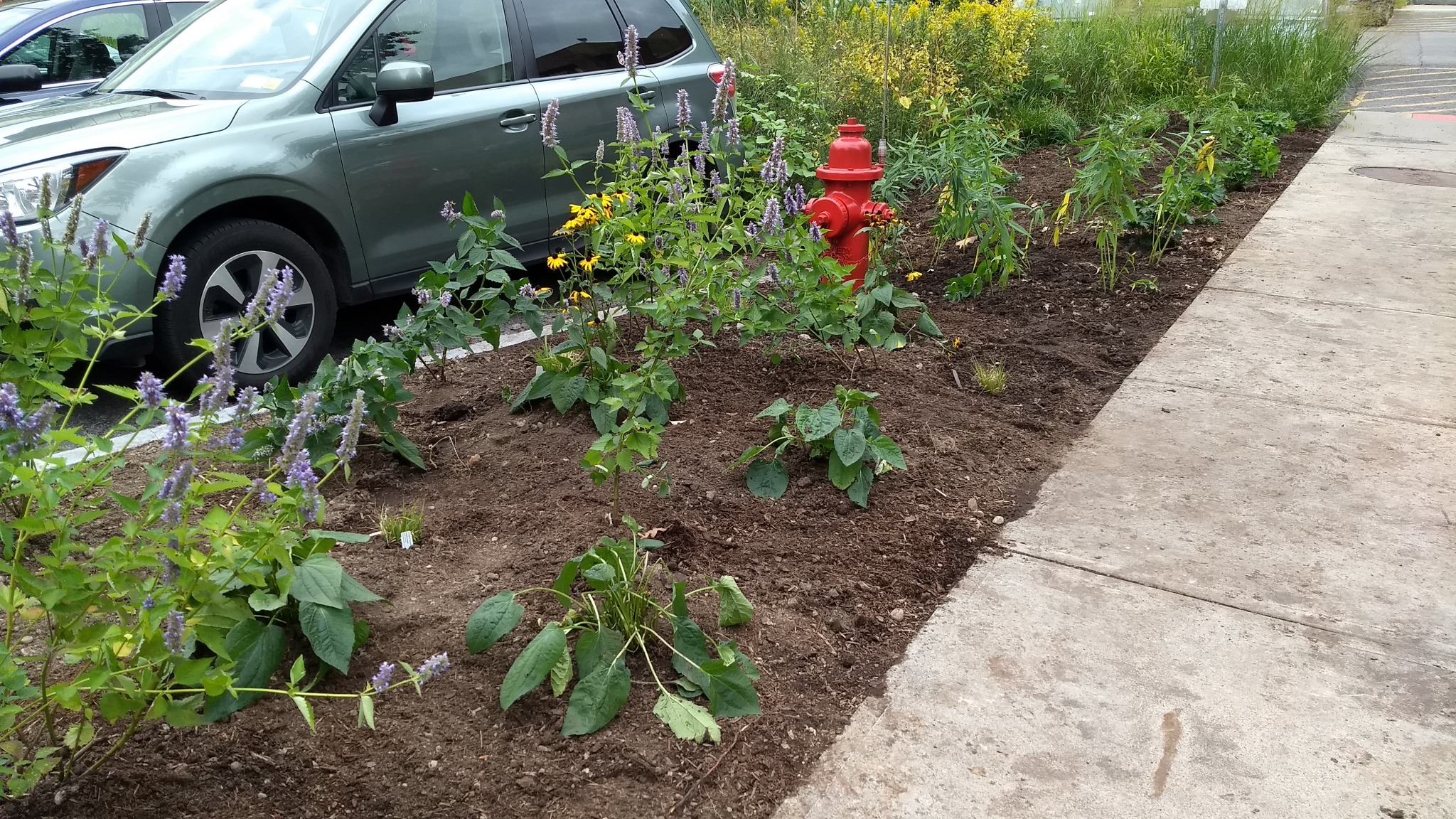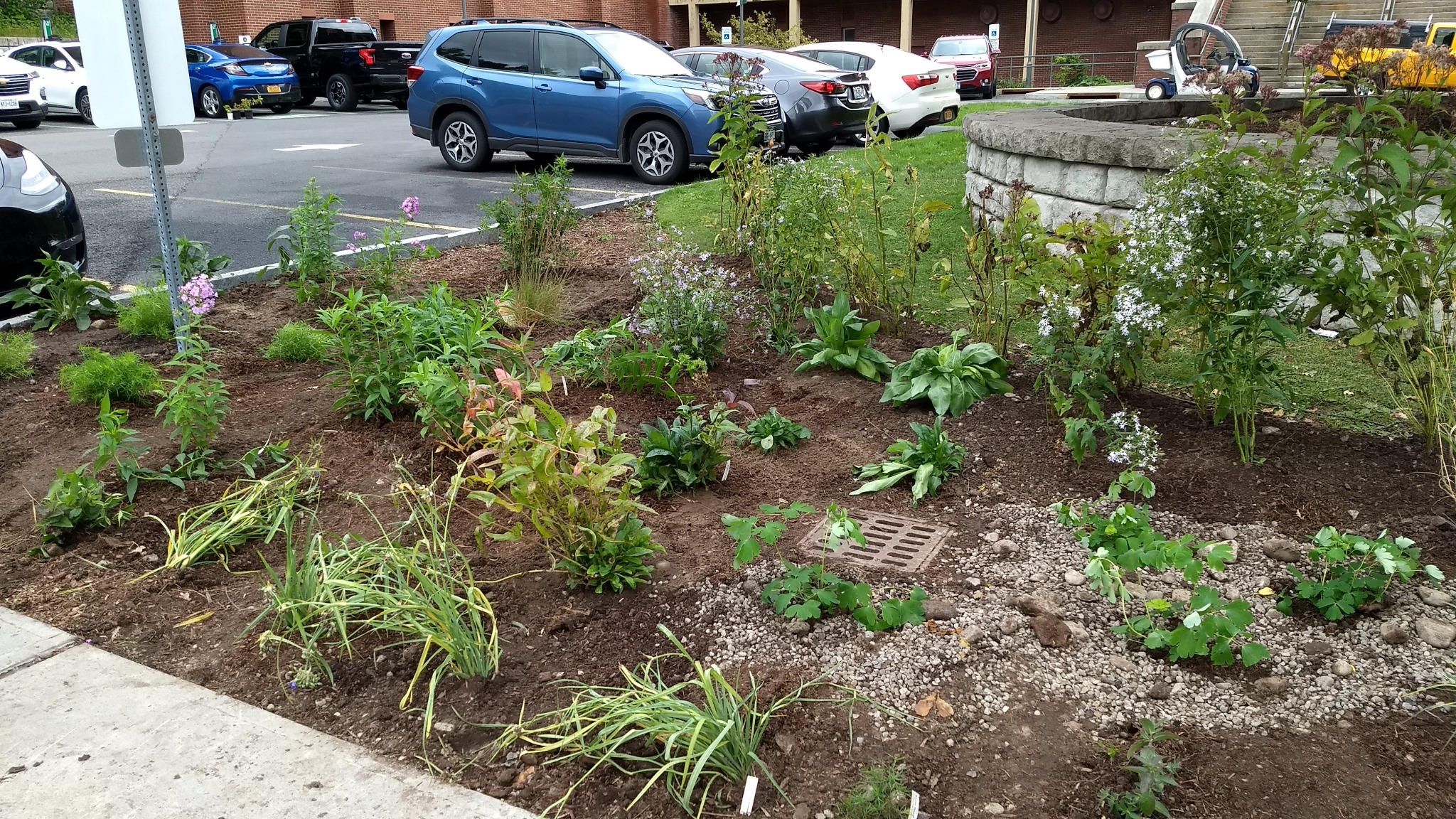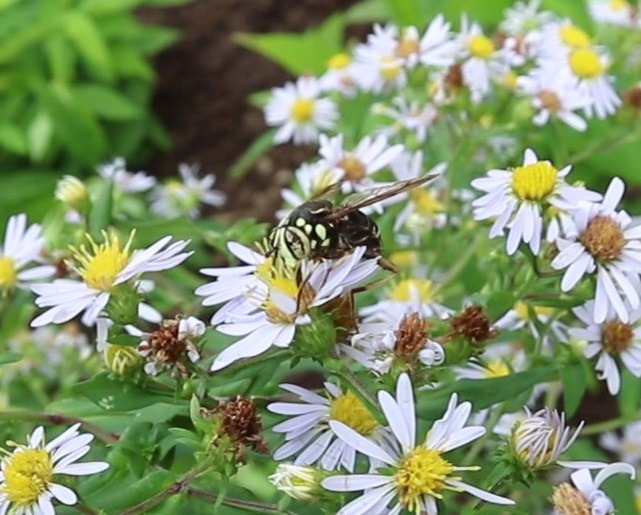Hello iNatters of New York and beyond! We are excited to introduce the SUNY-ESF Pollinators Project. This project will allow our college to gauge how well we are supporting New York's native pollinators through our efforts in partnership with the Bee Campus USA program, hosted by the Xerces Society for Invertebrate Conservation. Students, faculty, and visitors alike can get involved and help us learn more about campus ecology by contributing your observations.
The Premise
The Bee Campus USA program is a commitment to provide native floral resources, nesting habitat, and safe refuge from pesticides for our wild pollinators, shared by 135 other university campuses nationwide. As many know, SUNY-ESF is exceptional already in its commitment to environmental sustainability on all of its campuses, including the existing use of over 80 native species in our landscaping on the Syracuse campus and the exemplary Gateway green roof which showcases the unique Great Lakes alvar ecosystem.
But we believe that there are still many ways to make the ESF campus an even more biologically rich, ecologically functional, and aesthetically beautiful place for students, faculty, and visitors to enjoy. The main component of the Bee Campus pledge is to create native habitat for pollinators. There are many locations on the ESF campus where thoughtfully designed plantings of diverse native flowering forbs, shrubs, and trees can be added to meet the resource needs of a wide variety of native pollinators throughout the year. Improved signage, focused course curriculum, and community outreach events can all serve to bring awareness to the value of native plants in our city landscapes, and how we all can support pollinators right in our own backyards, parks, and businesses.
Beginning in spring of 2022, ESF staff, faculty, students, and volunteers will begin the process of designing and installing native plantings for the Syracuse campus, for areas such as Bray Hall and Baker Hall. Not only will the addition of more native plants attract pollinators and wildlife, but they will serve to enrich the human experience as well. Many of our New York native species have a rich cultural history with the Haudenosaunee people, which we will endeavor to highlight by working with the Center for Native Peoples and the Environment on our planting choices and signage. ESF is also heavily involved with efforts to bring urban food forests to Syracuse, reclaiming vacant lots to establish fruit and nut-producing species that can aid in alleviating food scarcity in impoverished communities and restore connections to the land. These efforts will continue on our campus with the selection of native species that support pollinators, wildlife, and people, encouraging students and the public to engage with the campus grounds through responsible foraging - and iNatting of course!
With this iNaturalist Project, we want to catalog the rich diversity of pollinators that share our beloved campus with us. When you visit SUNY-ESF, take a moment to stop and smell the flowers - and look for bees too! We hope to start seeing some new faces, like specialist bees and caterpillars that rely on native species we have planted for them, or imperiled bumblebees using the spring, summer, and fall resources we will now provide.
How To Participate
It's easy to contribute valuable data to this Project!
-
Your observations will automatically be added to the project if your location is within the bounds of the ESF campus, and is identified as one of the several different pollinator taxa listed on the project's homepage.
-
Whenever possible, use annotations and observation fields. Knowing what flowering plant species a pollinator was seen visiting is extremely useful, both for identification and to help us learn which plants are providing important resources. We highly recommend using the observation field "Interaction -> visited flower of:". We will strive to have signage for our plantings that identify most species, but you can also use Seek or iNat to help you identify a plant as well. Please keep in mind to make any observations of campus plantings 'casual' if you choose to post sightings of plants, as they are not wild.
-
Check out what species have already been documented. Honeybees, cabbage white butterflies, and paper wasps are well-represented, but there are only two observations of mining bees! We welcome all observations, but our ultimate goal is to expand the list of known species on campus and determine what plants are best serving native pollinators. Try spending some dedicated time around a patch of flowers and document whatever visits, or set out in search of a few target taxa that haven't been seen before.
-
Take multiple angles. Many, if not most, of our native bee, fly, and wasp pollinators are difficult or impossible to ID to species from photos, but the chance of an ID goes up substantially if you can get clear, in-focus pictures that show important characteristics. Experts here on iNat will do their best to identify your sighting to the lowest possible taxon.
-
Tell your friends! More pairs of eyes means more species. We want everyone to enjoy and connect with the bounty of life our campus has to offer. We hope to host themed events in the months to come, such as a blacklighting night to document moths, or pollinator walks, but you can get a group of friends together and make your own species challenge! Bee Campus is a community-wide effort and will thrive as more and more people engage.
We look forward to keeping the iNat and ESF community updated on our progress, with journal posts about new plantings and highlights of outstanding user observations!
It's been a difficult few years for all of us, with much of the college learning experience spent indoors and at home. It's about time we get back out outside and reconnect with our campus. We can all help to steward our land and make ESF an even better place for future generations to enjoy. So get out there and post some sightings!
Molly Jacobson, ESF Pollinator Ecologist
Contact: mmjacobs@esf.edu


 Bloodroot in front of Illick Hall.
Bloodroot in front of Illick Hall.

 Colletes inaequalis female
Colletes inaequalis female
 Photo: Lilly Kramer
Photo: Lilly Kramer








